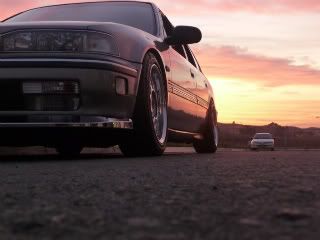
Believe it or not, some people would! I don't think camdizawg is one of those, since his questions are always very well thought out... he's clearly thorough and careful. But I usually give my responses knowing that someone with a little less sense may one day dig this thread up.
Although, I HAVE read a statement from Bill Gude (Gude/Bullfrog) saying that he's had stock Honda engines rev safely to the limits of the bottom end before the stock valvetrain ever gave them trouble. There was no specification on what engine that was, though (if it was a B18C5, those springs are damn near race springs already!)
When it comes to engine parts, I can't stress enough that while these parts may be very strong and reliable... they are OLD! My H22 is 14 years old!



 The beginning of a new era............................
The beginning of a new era............................

Comment